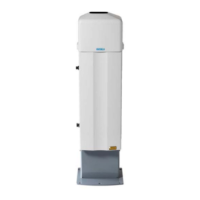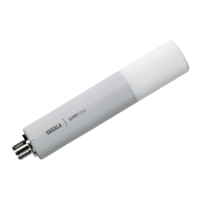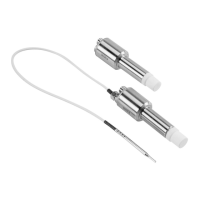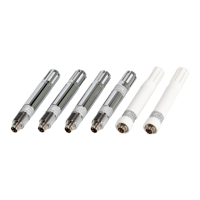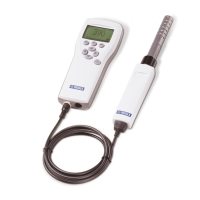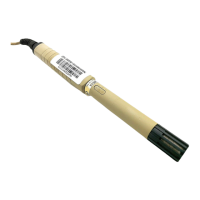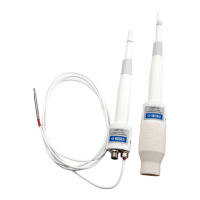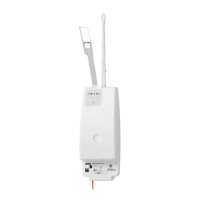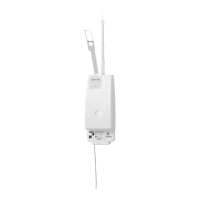• (any): request data (depends on the request)
• (any): fill-in data
The maximum size of the message is 1472 octets (bytes).
The packet number is echoed back by the DTR, but not processed in any way. The packet
numbers do not have to be sequential, any 32-bit value is valid.
The request ID is a 32-bit value that identifies the requested function, for example sensor
information. See Request-response pair specification (page 238) for request IDs.
The request data consists of 0 to 1464 octets of additional data associated with the request.
The fill-in data can be used to increase the number of octets in a message. Any number of
NULL characters (0x00) may be added to the end of the request as long as the total size of
the message does not exceed the maximum of 1472 octets. This may be useful, for example,
if the client implementation uses fixed-length packets.
Response format
The response data sent by the DTR is in ASCII format. With the exception of the packet
number, the data is human-readable. The data structure consists of:
• Packet number (32-bit integer)
• Zero or more lines of ASCII (text) keys and values associated with these keys (for
example temperature key and process temperature in Celsius)
The packet number is echoed back without change. The client (software on computer) can
use the packet number to check the response against the packet number of the request.
The message text consists of lines of text, each line a single key (of one word) and its value
or values. The values are separated from the key by an equal sign ( = ) and multiple values
are separated by a comma. White space (space or tabulator) is allowed anywhere except
within a single value or key name.
If the response consists of a character string, it is enclosed in double quotes ("). For example
all these are valid message text lines:
ok temp=23.45
headhum = 13.32
LEDcnt = 8341
ChemCurve = 1.234, 3.21, 0.00, 4.37, 1.11, 0.00002, 2.1345
StatusMessage = "Normal Operation"
All the key
identifiers are case-insensitive, see Request-response pair specification
(page 238). However, it is recommended that they are written as in this specification.
Chapter 15 – Ethernet connection specification
237
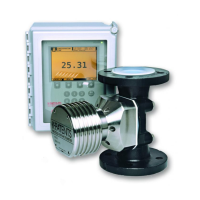
